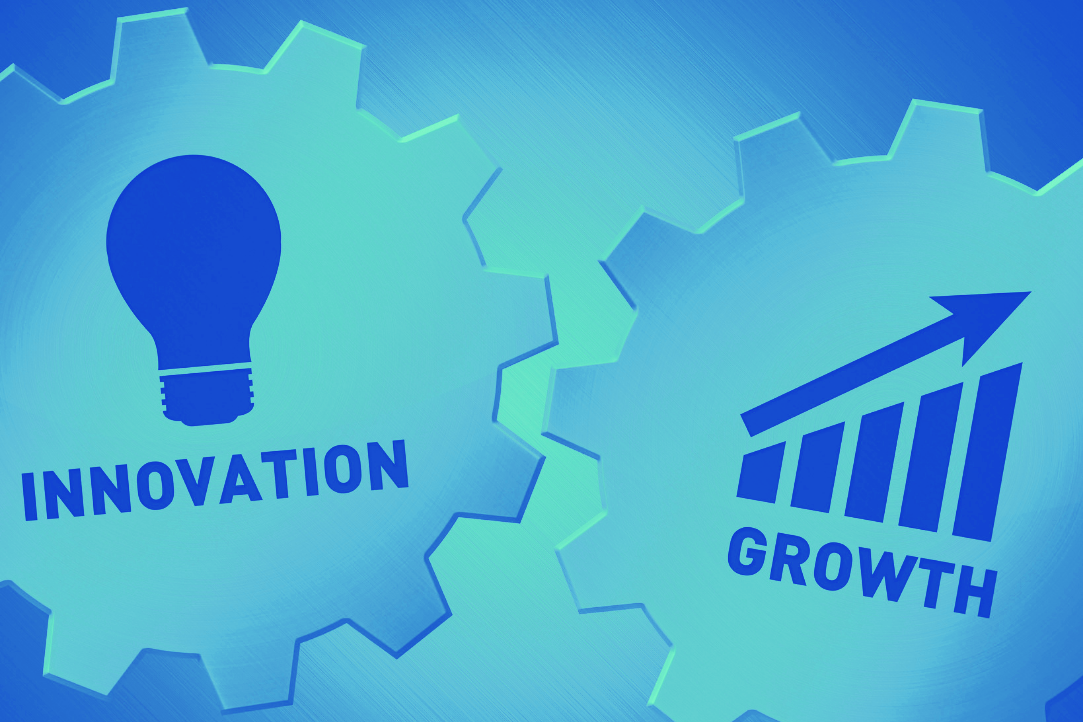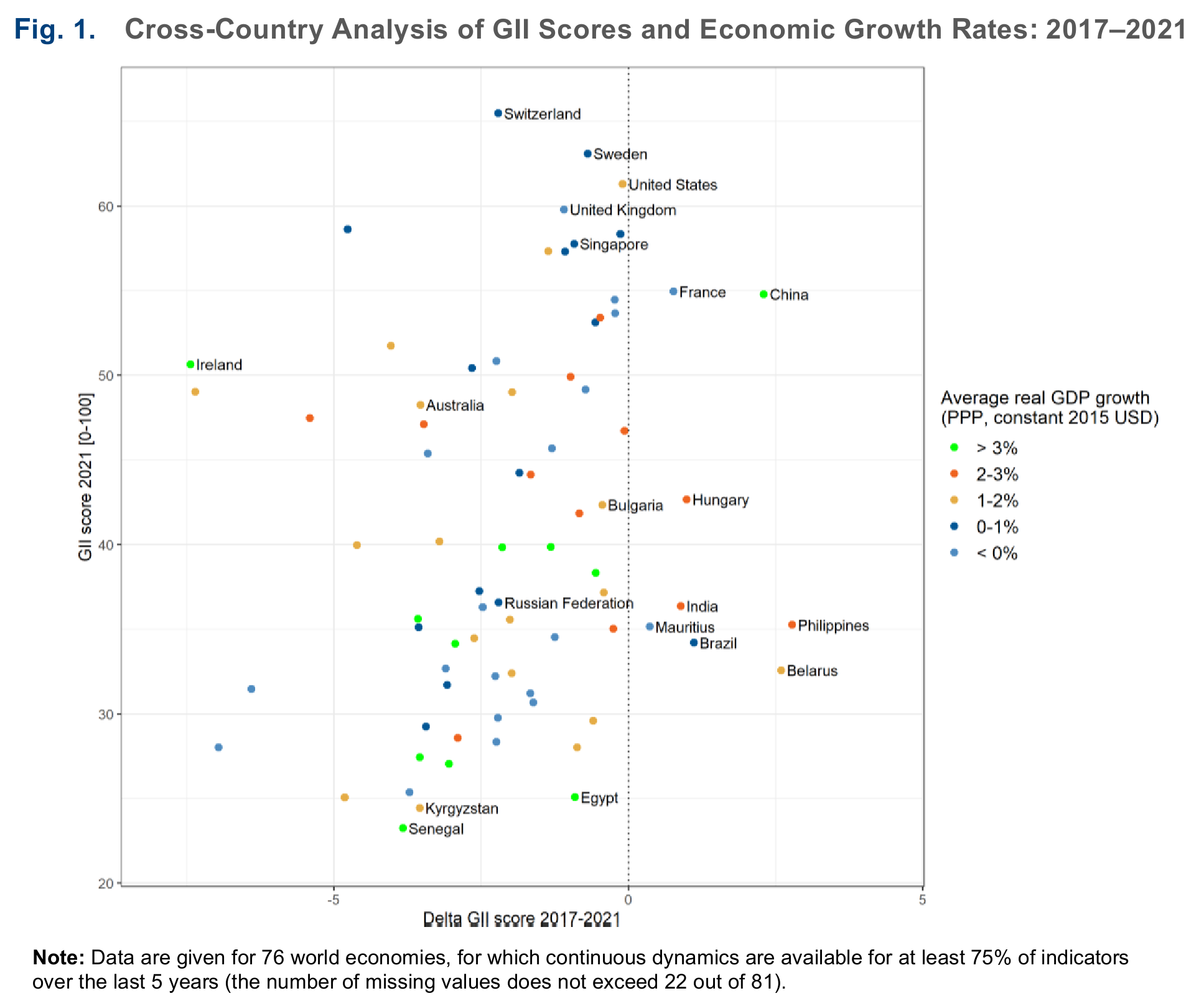Recipes for Success: How to Become a Leader in Global Innovation Index?

The Institute for Statistical Studies and Economics of Knowledge (ISSEK) at HSE University estimates the trajectories of 76 economies in the Global Innovation Index (GII) from 2017 to 2021 and analyses recipes for innovative success.
The World Intellectual Property Organisation (WIPO) and the Academic Partners Network have been publishing the Global Innovation Index since 2007. It is notable for a stable and publicly available methodology, a wide range of indicators (81) and a large number of countries analysed (more than 125). The final ranking is calculated as an average of two sub-indices: The Innovation Input sub-index (institutions, human capital and research, infrastructure, and market and business sophistication) and the Innovation Output sub-index (knowledge and technology outputs, creative outputs).
Political and business leaders around the world recognise GII as a reliable tool for assessing countries’ innovative development potential and performance and making proper managerial decisions. High positions in the ranking signal the ability of the economy to grow sustainably and target socially important objectives through innovation. The key question arises — what efforts countries need to consider for achieving global leadership in innovation, and is there a universal recipe?
Cross-country analysis of the dynamics of countries’ positions in the GII shows that high rates of economic growth do not always guarantee improvement of positions in the global ranking (Fig. 1). The economies of the GII traditional leaders (Top 3 in 2021: Switzerland, Sweden, USA) grew on average by no more than 1% per year over the previous 4 years (negative GDP growth in 2020), while the fast-growing countries demonstrate different trajectories of position changes.

Consider Ireland (7.2% in 2017–2020) and China (5.5%) which demonstrate the highest average GDP growth rates among the countries examined. While the GII index of Ireland declined in five years (from 58.13 to 50.7 points), resulting in a loss of nine positions in the final ranking (19th in GII-2021), China has shown unprecedented growth, moving up from 22nd to 12th place (54.8 points in GII-2021).
Apart from China, since 2017 innovation performance had been improved only in a handful of countries (7 out of 76) with inhomogeneous growth dynamics. These include the relatively fast-growing Hungary, India, and the Philippines (average GDP growth rates of 2-3% per year), Belarus (1.55%), Brazil (0.11%), and countries with negative GDP dynamics in 2017-2020 — France (-0.46%) and Mauritius (-1.07%).
The analysis shows that reliance on the invested resources only is insufficient to achieve leadership in innovation: the efficiency of their employment is equally important (Fig. 2). In fact, the balance (i. e., the ratio) between the results achieved and the innovation resources available is a distinctive feature of the countries which are leading and rapidly growing in GII. China (92%), Switzerland (90%) and the Netherlands (84%), which are also among the top 20 richest economies in the world, make the best use of their innovation potential. The average value of this coefficient for the countries under consideration is 62.5%.

Thus, the basis for countries to choose an individual recipe for achieving “innovative success” is the search for a balance between the growth of innovation resources and their effective use.
To be specific, while for GII leaders the crucial factor for further advancement in ranking is the outstripping performance improvement, for the lagging behind economies the success is determined by the ability to build up resources. For example, the dynamics of the positions of Mauritius, Kyrgyzstan and Senegal (the least economically developed countries in the sample, but demonstrating a relatively high average GDP growth rate in 2017–2020) greatly vary. Mauritius, which has invested significantly in innovation, moved up 12 places in 5 years, ranking 52nd (out of 132) in the GII-2021. By contrast, Kyrgyzstan and Senegal, ranked between the lowest in terms of innovation resources, moved down to 98th (from 95th) and 105th (from 100th) places respectively.
Russia closes the first third of the GII ranking. Despite maintaining its positions on the five-year horizon (45th), there is a slight decrease in the GII score (from 38.8 points in 2017 to 36.6 in 2021). The level of country’s innovation potential usage is 56.9%. By almost all metrics that characterise the efficiency of resource use and the degree of science, technology and innovation impact on the economy and society, Russia lags far behind all developed and many rapidly developing countries. Therefore, the build-up of resources could still ensure the country’s advancement in the GII, yet, the increase in the efficiency of their use is already becoming critical.
Sources: HSE ISSEK calculations based on Global Innovation Index 2017 and 2021 [URL: globalinnovationindex.org] and the World Bank [URL: worldbank.org].
Material prepared by Valeriya Vlasova and Anastasia Saprykina
